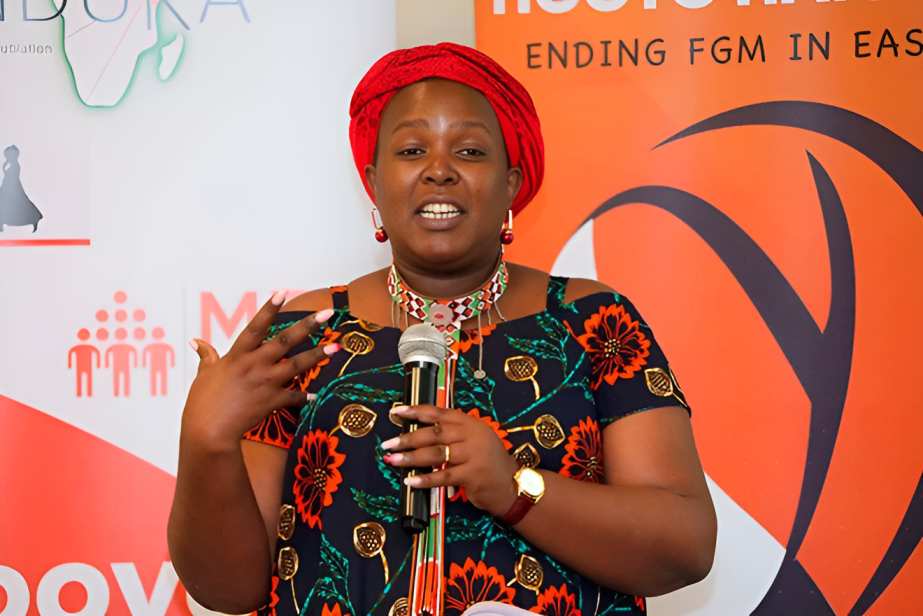FGM declines but child pregnancies surge as Kenya unveils bold girls' empowerment plan

Wajir County still tops the list with a prevalence of 97.2%, followed by Mandera (95.9%), Marsabit (83%), Kisii (77.3%), and Samburu (75.6%).
Kenya has made notable progress in reducing female genital mutilation (FGM), but rising cases of child pregnancy remain a growing concern, according to the Anti-FGM Board.
Board Chairperson Ipato Surum noted that FGM rates among women aged 15 to 49 dropped from 21% in 2014 to 15% in 2022.
However, she raised alarm over the country's child pregnancy rate, which currently stands at 24%.
Citing the 2022 Kenya Demographic and Health Survey, Surum emphasized that the national decline in FGM conceals stark regional differences.
Wajir County still tops the list with a prevalence of 97.2%, followed by Mandera (95.9%), Marsabit (83%), Kisii (77.3%), and Samburu (75.6%).
In contrast, Busia recorded the lowest rate at just 0.1%. Narok County, where the event was held, stands at 51%.
Speaking during the unveiling of Kakenya’s Dream 2025–2029 Strategic Plan, Surum said FGM survivors are best positioned to articulate the pain and long-term effects of the practice.
“Only a survivor can truly understand the full impact,” she said.
Sharing her own story, Surum recounted becoming a mother at 17, describing herself as a mother of six and a "born conqueror."
“If you had doubts, now you know,” she remarked.
The board’s CEO, Bernadette Loloju, also opened up about her experience, having undergone FGM before turning 13. She urged girls to hold onto their dreams and resist societal pressures that threaten their futures.
“Every girl has a dream, and every girl deserves the chance to pursue it,” Loloju said.
She emphasized that empowering women has a ripple effect on families and communities, while calling on men to actively support efforts to eradicate FGM.
“We are not here to take over anyone’s role. We want to be partners,” she added.
Loloju also acknowledged the role of the Prohibition of FGM Act, 2011, in helping reduce the national prevalence. When she was growing up, she said, the figure stood at 98%.
Surum raised further concerns about men who continue to promote FGM through online platforms and described femicide as a growing national crisis.
A government task force on gender-based violence formed by President William Ruto is expected to release a report by July 7, drawing on data from 27 countries and addressing issues including femicide.
Dr. Kakenya Ntaiya, founder of Kakenya’s Dream, said the new strategic plan will prioritize education, health, and economic empowerment for girls, while involving boys, parents, and local communities in long-term solutions.
In Narok County, for instance, only 58% of girls complete primary education and a mere 24% finish high school.
“We want every girl who goes through our programs to emerge with the tools to lead a dignified, purposeful, and economically independent life,” said Ntaiya.
The plan sets out to provide scholarships to over 2,000 girls and upgrade infrastructure in 15 public schools by 2029.
It also seeks to curb youth unemployment which currently sits at 60% through vocational training, mentorship, and financial literacy initiatives.
So far, Kakenya’s Dream has impacted more than 35,000 youth through its Health and Leadership Program, which provides health education to boys and girls.
Its clinic, launched last year, continues to offer services at no cost.
The organization now aims to expand its reach to 300 schools across Narok and Kisii counties with comprehensive sexual and reproductive health education.
The plan also incorporates climate-resilient activities such as tree planting, rainwater harvesting, and kitchen gardening.
“This is an ambitious blueprint,” Ntaiya said. “By 2029, we intend to reach 300 schools with SRHR programs, increase our scholarship support, grow our mentorship networks, and deepen collaboration with government, private sector, and civil society.”
